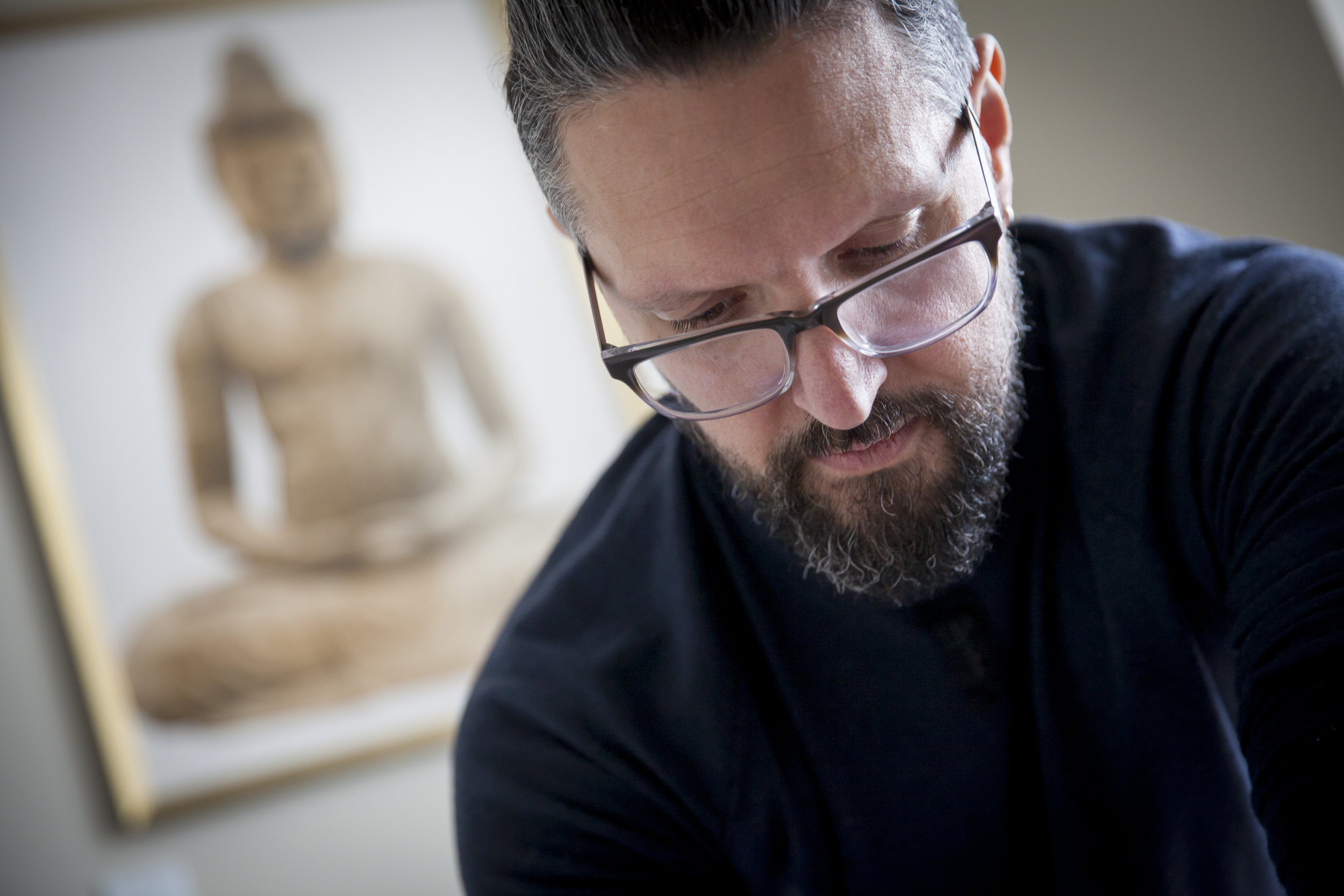
Session 1
Goal: Release the body’s fascial sheath “stocking” that lies just below the skin’s surface.
Anatomical focus: Lateral aspects of the thighs; hamstring insertions into the ischial tuberosity and greater trochanter; lateral and frontal aspects of shoulders; frontal rib cage.
Result: Clients feel they can breathe more deeply with more freedom of movement in their hips and pelvis.
Session 2
Goal: Optimize weight distribution over the feet so that the inner foot is more biomechanically engaged. This creates a better base of support for the low back.
Anatomical Focus: Feet and ankles: plantar fascia, intertarsal fascia, retinaculum of the ankles, insertion of tendons of the lower leg muscles
Result: Increase spring in the lower leg.
Session 3
Goal: Integrate the work of Sessions 1 & 2 by lengthening the sides of the body.
Anatomical Focus: Soft tissue attachments of the hip stabilizers and rotators; fascia overlaying the lateral aspect of the rib cage and neck.
Result: Freer breathing and a feeling of being balanced between the front and back body.
Session 4
Goal: Build stability in the pelvic floor creating length in the central line of the body.
Anatomical Focus: Medial aspects of the legs (i.e. adductor muscles).
Result: Increased sense of length coming up through the centre of the body.
Session 5
Goal: Continuing the work of Session 4, focusing on lengthening up the front of the body.
Anatomical Focus: Lengthen and separate the rectus, obliques and transverse abdominals to allow space for the psoas to maintain a healthy lordotic curve.
Result: Feeling of legs extending out of the pelvis when walking.
Session 6
Goal: Establish length in the back body to match the length created in Sessions 4&5
Anatomical Focus: Posterior aspect of the legs including the hips and pelvis, ligamentous attachments of the sacrum and 4th and 5th lumbar vertebrae, and lower back.
Result: Mobilized sacrum in relation to the hip bones to alleviate tension in the lower back.
Session 7
Goal: Decompress the cranium and cervical spine.
Anatomical Focus: Jaw and facial muscles, neck muscles (i.e. scalenes and sternocleidomastoid).
Result: Head and neck in alignment with the shoulder girdle.
Session 8
Goal: Continue balancing hip girdle and legs in relation to the spine.
Anatomical Focus: Lower and upper leg musculature and hip muscles.
Result: Continued freer range of motion in the hips and legs.
Session 9
Goal: Continue balancing the shoulder girdle in relation to the spine.
Anatomical Focus: Rotator cuff musculature, arms and neck.
Result: Continued freer range of motion in the shoulder girdle and neck.
Session 10
Goal: Continue enhancing the biomechanical goals for a given individual.
Result: More efficient and refined patterns of movement with overall bodily awareness of one’s body in gravity.